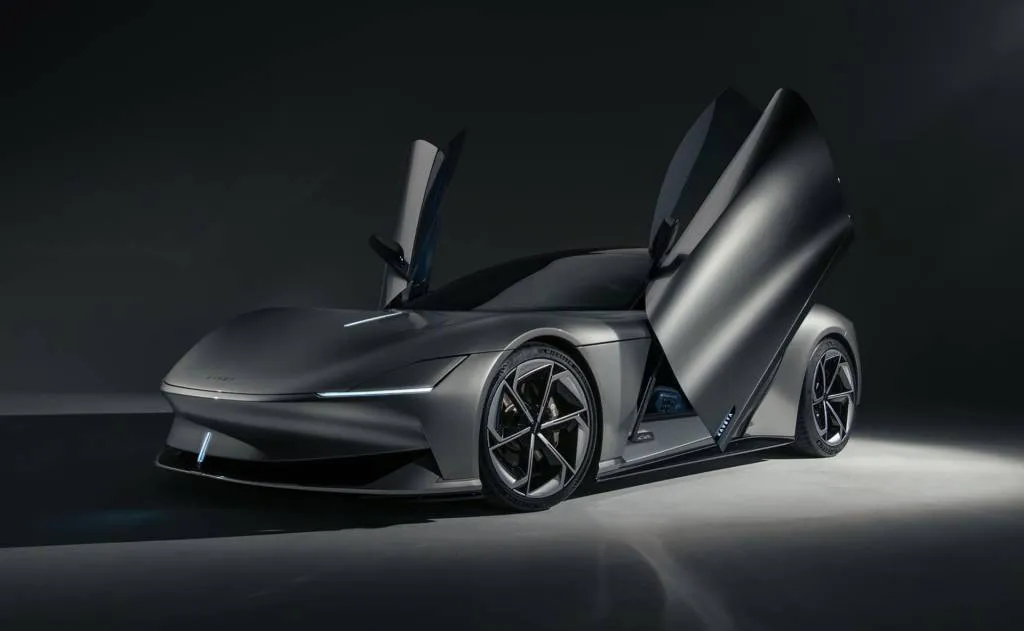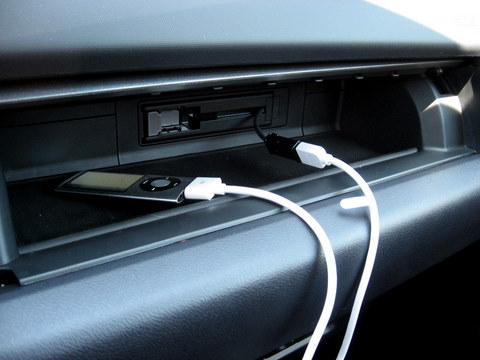- May consolidate 50+ ECUs typical in new EVs to only a few
- Nets a 3-5% acquire in effectivity and vary, quicker charging
- Simplifies meeting, cuts weight, extends attain of OTA updates
- Karma Kaveya EV arriving in 2026 is constructed on Intel structure
The concept of the software-defined car is, it appears, a billion-dollar buzzword in at present’s auto {industry}.
Really, the cash’s on it. In November, Volkswagen—recognizing Rivian’s progress within the space—invested as much as $5.8 billion in a brand new three way partnership with the U.S. EV maker. The funding is geared toward creating each the electrical structure and the software program for what would possibly quantity to hundreds of thousands of next-generation software-defined autos (SDVs).
Whereas we wait and see what that partnership brings, there’s a widespread consensus amongst tech suppliers and automakers that SDVs are the longer term for EVs and past—whereas few have offered a concrete roadmap of how and once they intend to get there.
At CES in Las Vegas earlier this month, Intel stood out as an exception, for its unveiling of a complete, whole-vehicle SDV resolution. It claims rather more than over-the-air updates, and that it’d make EVs not solely extra adaptive to wants but additionally extra environment friendly—with as much as a 5% acquire in EV vary and effectivity from its new software-defined structure plus a extra responsive driving expertise.

Karma Kaveya
Karma to be “dwelling growth prototype” for Intel structure
That structure isn’t a far-out idea, and it might be put to the check in lower than two years. The Intel whole-vehicle software-defined structure is because of be integrated on the Karma Kaveya, a 1,000-hp totally electrical all-wheel-drive coupe, with claimed 0-60 mph acceleration below 3.0 seconds, that’s slated for manufacturing in 2026.
“We expect that we’ve got the chance to be the very first producer to deploy a full ground-up true software-defined car structure,” mentioned Marques McCammon, at Intel Automotive’s CES presentation. “And we’ll do this with the Karma Kaveya; it can have the flexibility to have workloads redistributed, be up to date by way of the cloud, and it’ll function a platform for each Karma car going ahead.”
McCammon mentioned that the Karma EV will likely be “a dwelling growth prototype for the broader {industry}, as we ally for the event, appearing as a growth companion at scale.”
Revealed at CES was Intel’s Adaptive Management Unit (ACU), which claims to consolidate the management of auto domains, purposes, and safety-critical capabilities all onto one central processing chip.

Karma Kaveya idea
Extra than simply OTA updates, Intel simplifies {hardware}
Most trendy autos make use of quite a few separate controllers, every with their very own wiring and digital management unit (ECU), both as a part of a distributed strategy or a consolidated zonal strategy. Intel claims that with the ACU it may scale back general power demand from an EV’s battery pack by really adapting the voltage degree for high-voltage programs in actual time, relying on the situations (like driving fashion).
Its methodology, with a software-defined zonal controller, can freely shift workloads round. Tesla’s Sentry mode for car safety, for instance, runs on the in-cabin system at present and makes use of 40 to 50 watts continually, talked about Jack Weast, Intel’s VP and the overall supervisor of Intel Automotive, within the firm’s CES presentation earlier this month. However with a zonal platform it may run on only a few watts, turning on the bigger system when there’s an intruder.
Or, famous Weast later, should you’re at a protracted stoplight, some facets of active-safety programs may not have to be powered up.
“The best way that we take a look at it’s to consider an information middle; you get all these huge racks of computing however you may actually use software program to activate one rack or the opposite, transfer workloads backwards and forwards,” defined McCammon to Inexperienced Automobile Studies as we took within the present.
The Karma CEO famous the parallels between the concept and one {industry} normal that began with Intel and developed from not simply communication to scalable energy and voltage—that of the USB port.

USB port
This form of dynamic variable voltage scaling may need been used on parts of the EV platform beforehand, however increasing the idea to the whole car is one thing new.
“That is what we’ve been doing in PC platforms for 20 years,” summed Weast within the CES presentation.
It could be a welcome change at this level. Right this moment’s autos could be nightmares to service, not to mention assemble—basically rats’ nests of disparate management items, positioned across the car and sometimes working at completely different voltages and ranges of connectivity, leaving some programs able to over-the-air updates and others not. Greater than 50 ECUs isn’t unusual in new autos, and a few autos have greater than 100.
Intel’s resolution may help “a number of topologies,” as a part of a whole-vehicle structure, it claims, and it might be the subsequent step—or one of many subsequent steps—in a quiet revolution in how autos are conceived, constructed, and upgraded.

Intel Automotive SDV venture
Constructing on Tesla and Rivian, or leapfrogging it?
Trade suppliers have some catching-up, measuring-up, and coordinating on requirements to do, whereas there’s definitely potential to innovate. However a few of this duty has been within the fingers of automakers.
Shifting to a wiring-saving “zonal” structure, with zones primarily based on bodily location moderately than particular duties, is without doubt one of the keys. So is shifting to software program controls for these zones and the elements inside them.
Tesla led greater than a decade in the past by making use of the software-based, over-the-air-update mannequin of smartphones to its autos—and making use of the zonal strategy—converging on the concept of programs that might be readily upgraded or options that could be enabled by way of software program.
Nio, amongst others, has additionally used a zonal strategy. Rivian stays an {industry} darling of this transformation, and it managed in a rethink of its structure that arrived final yr within the 2025 Rivian R1S and R1T to consolidate an already-neat 17 ECUs down to only seven, slicing 1.6 miles of copper wiring from the car, serving to optimize effectivity and simplifying the provision chain.
Below VW’s funding in Rivian, it can license that zonal design and permit future collaboration between the 2 corporations. The strategy may result in extra simply upgradable autos that may value much less to construct and in addition would possibly higher deal with {hardware} adjustments over time.

Intel Adaptive Management Unit for software-defined autos
Though there’s no full manufacturing car with Intel’s strategy but, it claims an 80% discount in ECUs, a 60% discount in wiring harness size, and a 35% or extra discount in energy consumption. Additional, Intel says that the strategy means decrease car part prices, permitting a smaller motor and battery pack—and lower-cost EV platforms general.
All this mentioned, it’s unclear whether or not Intel’s resolution is merely treading water amongst tomorrow’s EVs or swimming laps round them. Almost each automaker by now understands the need to simplify to be able to compete. Ford CEO Jim Farley, for example, mentioned in 2023 that its next-generation EVs will likely be “radically simplified,” with a brand new electrical structure that’s totally software program updatable.

Intel and Karma co-branded inverter for software-defined EVs – CES 2025
Karma’s EV inverter is a key piece
Again to the power benefits, Intel says that its strategy, together with an influence administration system-on-chip (SoC), helps maximize effectivity for inverters, chargers, and converters. System-wide, the strategy recovers as much as 40% of what would in any other case be powertrain-system power losses—netting a 3-5% acquire in effectivity and vary, by WLTP-cycle testing, together with quicker charging and “a extra responsive driving expertise.”
The inverter is without doubt one of the keys to that, and California’s Karma Automotive developed an inverter unit that’s supposed to be a part of Intel’s whole-vehicle resolution. The silicon carbide inverter is Karma’s personal mental property, confirmed Marques McCammon to Inexperienced Automobile Studies, and prone to be made in Michigan, but it surely’s co-branded with Intel.

Intel and Karma co-branded inverter for software-defined EVs – CES 2025
By now you could be questioning: Why is the CEO of the California-based area of interest, low-volume luxurious car maker, which is greatest identified for reviving and refining autos and programs derived from the primary Fisker Automotive, speaking industry-altering tech in such a deep manner?
It stems from a protracted partnership when he was a administration counterpart at Wind River programs—McCammon on the software program facet, Weast on the {hardware} facet.
“We had a imaginative and prescient then of what a software-enabled, or software-defined car was going to be,” McCammon defined to GCR. “However after we thought this up, we all the time wanted somebody to go first.”
Quick ahead a decade, to a couple of yr in the past, and Intel had simply acquired Silicon Mobility, which McCammon mentioned was a turning level.

Intel Automotive EV interface
“We mentioned, the place will we begin? Everyone’s centered on the cabin, however actually power administration, utilization, and effectivity is within the powertrain domains.”
Karma had already been growing its personal inverter, its personal powertrain area management unit, and a chipset, McCammon defined, however Intel and Silicon Mobility dropped at the desk “added a degree of software program programmability right into a system that’s often very fastened.”
McCammon defined that Karma basically now it has a programmable API between motor and {hardware}—one thing most different trendy EVs don’t have. “We have been already engaged on it for our subsequent inverter, for our subsequent technology merchandise,” he mentioned. “It was a pure match.”
“The inverter is one piece of it—this half we’re speaking about at present— however we’re engaged on a lot, rather more,” added McCammon.


